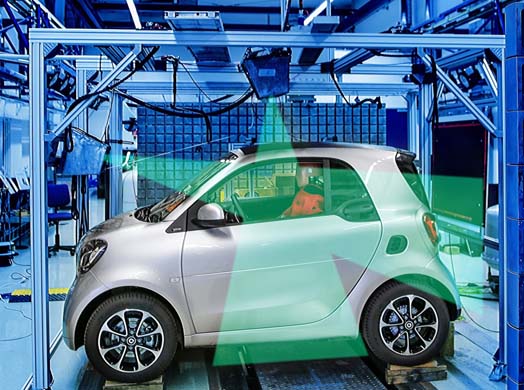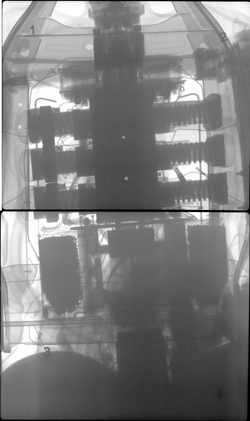Crash test under X-ray


For the first time, the internal structures of a vehicle are rendered visible during crash thanks to the newly installed technology for X-ray car crash (X-CC) at the Crash Center of the Fraunhofer-Gesellschaft.
Modern, lightweight vehicles are produced of ever more complex materials and structures. To understand the constitution of these structures, X-ray and computed tomography have become established in research and development. Up to now, X-ray was mainly restricted to static investigations. With the technology of X-CC, the Fraunhofer-Institute for High-Speed Dynamics, Ernst-Mach-Institut, EMI, for the first time combines X-ray with the high-dynamic deformation processes under crash conditions. This enables to understand how inner structures of a vehicle, which are not visible from the outside, behave during crash. On the basis of these gained insights, materials and numerical models can be optimized.
Within the Tech Center i-protect, first cooperation projects with the automotive industry have been started. They aim at the observation of essential internal vehicle structures during crash. Employing a test vehicle, EMI analyzed the screening potential of the X-ray source to specify the technical adjustments for the recordings during impact. The precise timing of the exposure forms a challenge, and furthermore, the exposure time has been shortened by the factor of 1000 with regard to common X-ray procedures. First results gained from simple structures confirm the predictions made by the simulations and thus support the simulation model. Further experiments with increasingly complex tasks are supposed to lead to an improvement in the simulations and the X-ray technology.
For the upcoming year, Fraunhofer EMI intends to combine X-ray recordings and simulation data with algorithms from computed tomography. These data will finally generate a three-dimensional picture of the deformation processes during crash. With X-CC, a pioneering instrument arises for the understanding of crash, taking into account modern methods and complex forms in order to optimize simulations and, finally, vehicle safety.